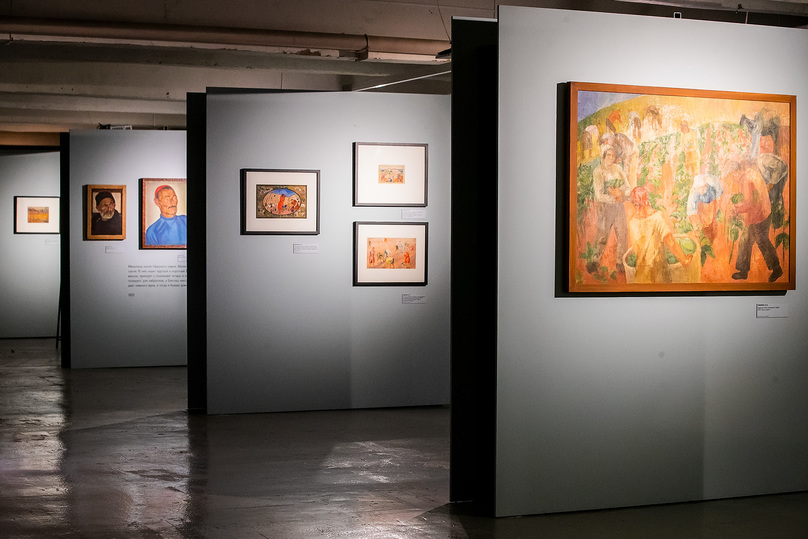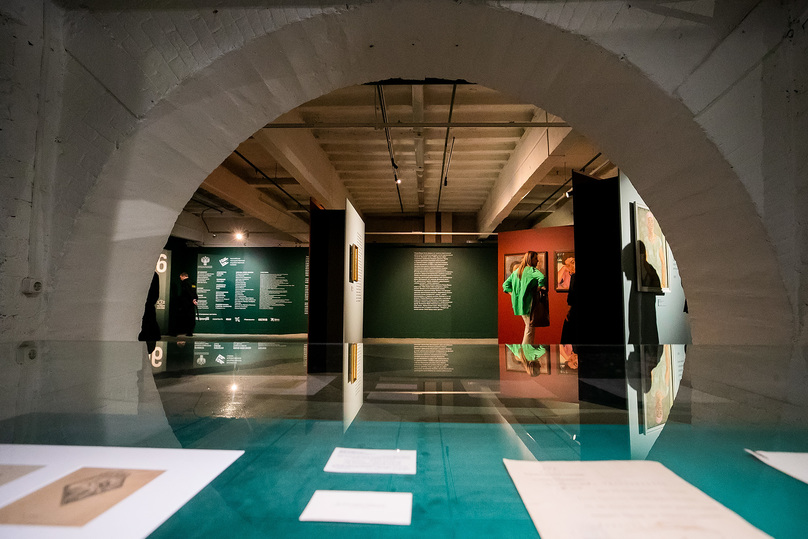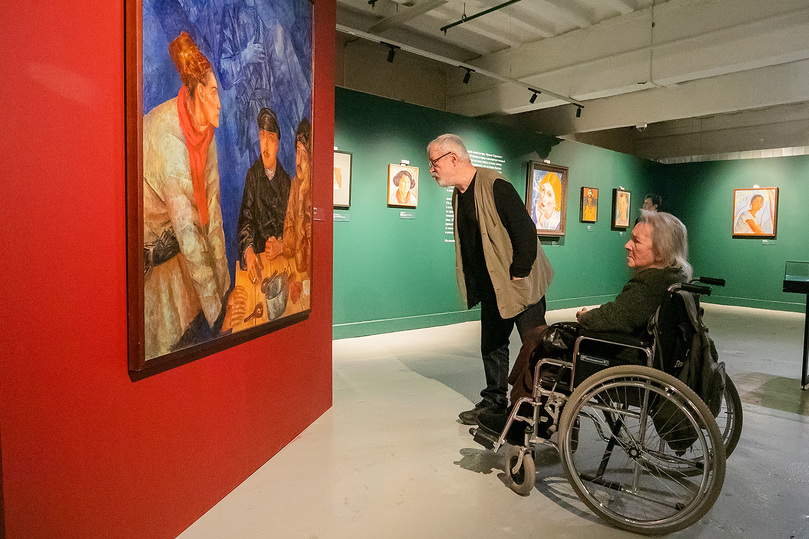The exhibition of Petrov-Vodkin and his student showed unexpected drama
[ad_1]
The exhibition of Kuzma Petrov-Vodkin cannot do without a red horse. The Museum of Moscow, where they presented a project about the artist and his student Maria Lomakina, also has it. The exposition opens with the icon of Michael the Archangel on a red horse, similar images inspired the author of the iconic painting. And the exhibition ends with the work of our contemporary – the grandson of Helium Korzhev Ivan, where the fiery horse is depicted in close-up.
However, such a border is not the main thing. The focus is on what is often left behind the scenes: the fate of the author of “Bathing the Red Horse”, the principles of his teaching activities, which he has been engaged in for more than 20 years, and their results in the work of his extraordinary student. A special place in the project was occupied by the Crimea, where Lomakina was born, and which Petrov-Vodkin painted during the earthquake.
Before us are two destinies – teachers and students. A lot of them are similar. Kuzma Petrov-Vodkin was born into the family of a shoemaker: in his thesis, he depicted his relatives at work. Maria Lomakina’s husband was a toy maker, and in one of her paintings you can see him at work. Both grew up next to the water element: Petrov-Vodkin on the banks of the Volga (born in Khvalynsk), Lomakin – in a village near Yalta. For both of them, artistic talent manifested itself in childhood, and fate itself pushed them onto the path of art.
Both were influenced by the Wanderers, which is felt in the early works: Petrov-Vodkin studied with Serov, Lomakina was acquainted with Konstantin Korovin, who saw her sketches and left an approving review of them. And each went his own way, which was influenced by the history of the country.
In 1923, Maria Lomakina, who distinguished herself at the exhibition of the Artistic Society of the Southern Coast of Crimea, was sent to the Petrograd Academy of Arts, where she entered the monumental department – the workshop of Petrov-Vodkin. By that time, the artist was already well known, and his pedagogical program, based on the principles of tricolor, spherical perspective and movement, was accepted by the Academy of Arts as “the most complete and consistent.”
What tasks did he give his students? Dynamic. For example, to depict the “street of the running”, “the room of the lying” or “landscape of the falling”. How to express these poetic formulations on canvas? Again, dynamic. At the exhibition, the viewer can see this in examples of the work of a teacher and a student. Canvases by Petrov-Vodkin are presented on a red background, Lomakina – on a light blue one. On some walls they are adjacent, so it is easy to trace the connection.

It is especially felt in a number of landscapes and portraits, where the accent colors are red, blue and yellow (the coloristic principle of Petrov-Vodkin grew out of the icon-painting tradition), and the world is seen as a sphere where, in the artist’s own words, “fluctuations of oncoming, intersecting, converging and diverging axes of objects, as in a magnifying glass.
Among the presented works there are some rarities. For example, a ceramic set (cup and saucer), made according to the sketches of Petrov-Vodkin – there were no more than twenty of them. This one, blue with red squares, came to Moscow from the Hermitage. There is a landscape painted in Paris (1909), when the artist’s style was still taking shape and principles were just being formed, which he would pass on to hundreds of students, among whom Maria Lomakina would be one of the most gifted.

The most dramatic work was written by the artist in the Crimea – in the homeland of his student. In 1927, Kuzma Petrov-Vodkin and his family came to Koktebel to visit Maximilian Voloshin. Just then there was an earthquake of magnitude 7-8. Buildings collapsed, people died, but not only under collapses – some died from a broken heart, went crazy …
When the first, most powerful aftershocks began at three o’clock in the morning on September 12, Petrov-Vodkin first of all ran to his daughter’s room, wrapped her in a blanket and ran out into the street with her. Elena later recalled that when the next day everyone around began to leave the peninsula in a panic (not only vacationers, but also local residents left), her father said: “This may not happen again, and therefore we will stay, come what may.” And he began to draw.

Crimea was shaking for several more days, and for almost two more weeks, weaker tremors of magnitude 2-3 were observed. The exhibition presents one of the paintings depicting people at that terrible moment of a natural disaster. Opposite it is a photo chronicle of the destruction. And behind the wall is a portrait of Voloshin, who stoically endured the earthquake, although his beloved office was seriously damaged, and besides, the house had to be repaired. But the poet had strong nerves, which reflects the characteristic portrait of Petrov-Vodkin.
The Crimean history continues in the painting by Maria Lomakina, who writes that after the earthquake she understood her native landscapes on a new scale: the echoes of which we experienced … ”And it seems that we have before us everyday scenes (harvesting, for example), portraits of ordinary people, but they feel hidden power and quiet drama.

It’s strange, but after that natural disaster, the fate of both artists took a different path, making an unexpected turn. A few months later, Petrov-Vodkin learns that he has tuberculosis. For health reasons, he will have to give up teaching, doctors will forbid him to paint in oils, but he will violate the ban. And he will create one of his most powerful works, reflecting the time, called “Anxiety” (it, however, is not at this exhibition).
Maria Lomakina in the 1930s will leave for Zagorsk (now Sergiev Posad), where her husband, a toy maker, worked, and will write more and more on the table. Her later work has little of the avant-garde innovative method of the teacher, and more of tradition. She will create models of toys for the Zagorsk Scientific and Experimental Institute of Toys, and in the last years of her life she will teach at the Abramtsevo School of Industrial Art.

[ad_2]
Source link






